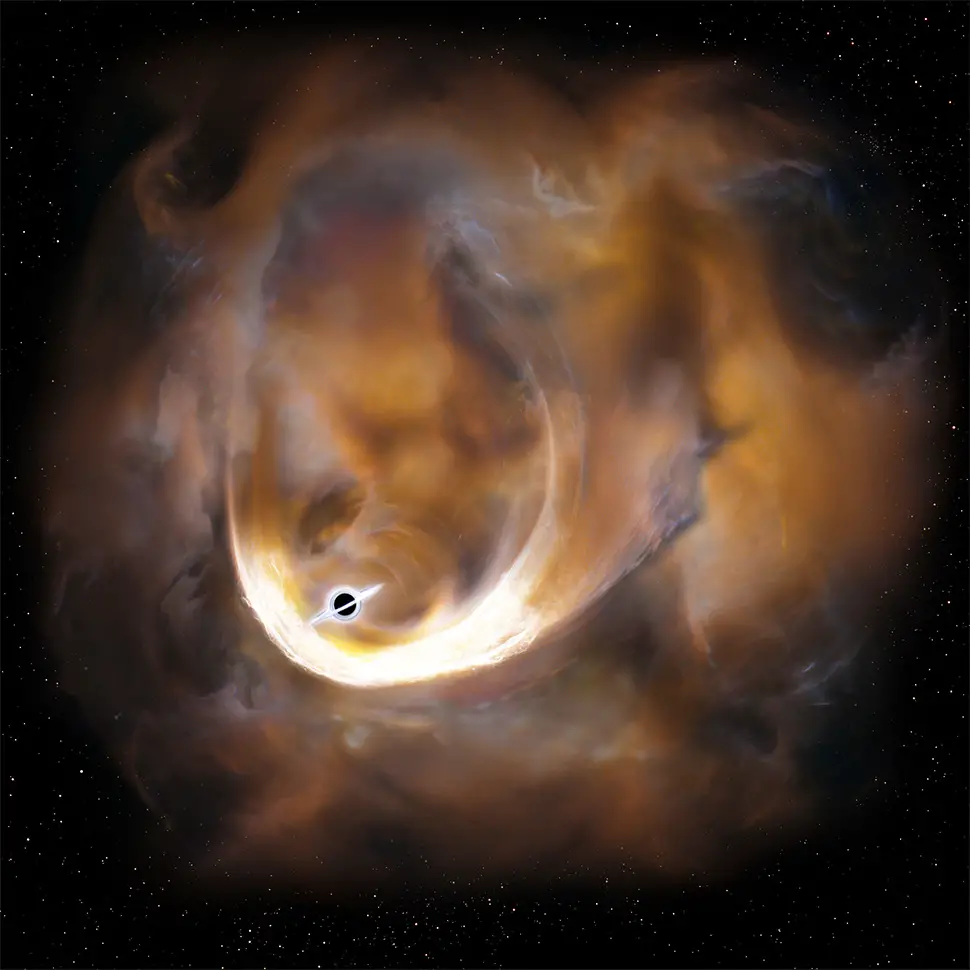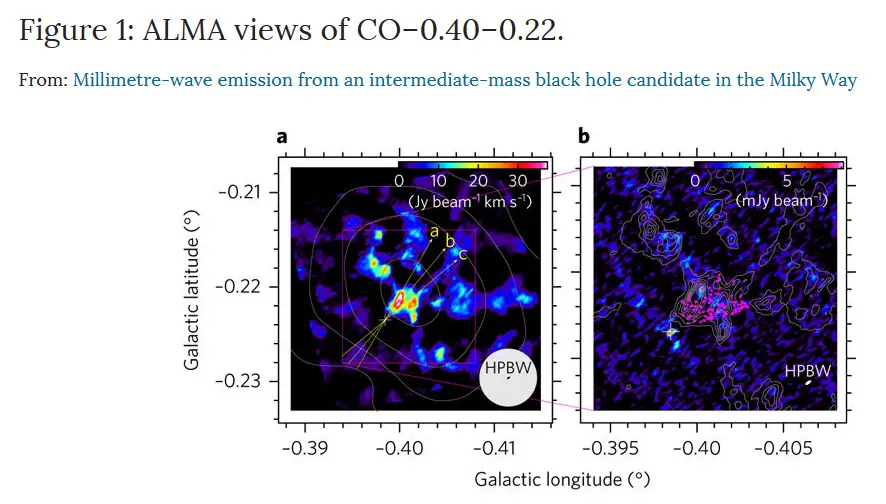
19th September 2017 Astronomers discover second largest black hole in the Milky Way Astronomers report the discovery of a black hole with 100,000 solar masses hiding in a gas cloud near the heart of the Milky Way, ranking it as the second largest black hole ever seen in our galaxy.
A team of Japanese astronomers, using the ALMA telescope in Chile, has published evidence of an intermediate-mass black hole lying near the centre of our Milky Way galaxy. If confirmed, it would be the first such object of this size class in our galaxy, and the second largest black hole overall. It is estimated that 100 million black holes lie scattered around the Milky Way – but most are relatively small, ranging in size from about five, to several tens of solar masses. Only 60 have been identified so far. The nearest of these stellar black holes is 3,500 light years away. Above the "stellar" size class are "intermediate-mass" black holes, which (until now) have only been found in galaxies other than our own. These start at roughly 100 solar masses, with an upper limit of several hundred thousand. At the extreme end of the scale is the class of objects known as "supermassive" black holes. These monsters – with millions to billions of solar masses – lie in the centre of almost all currently known massive galaxies. In the case of our own galaxy, scientists have observed a bright and very compact astronomical radio source that is believed to be a supermassive black hole with 4.3 million solar masses and is named Sagittarius A*. This is so huge that if placed in our own Solar System, it would almost swallow the planet Mercury. Orbiting Sagittarius A* is a B-type star called "Source 2", which hurtles around at the astonishing speed of 5,000 km/s (11,000,000 mph, or 1/60th the speed of light), making it one of the fastest known stars. The new intermediate-mass black hole discovered by the team at Keio University, Tokyo, is thought to be 200 light years from Sagittarius A*; which is relatively close in astronomical terms. It is hidden within a toxic gas cloud of hydrogen cyanide and carbon monoxide – moving at wildly different speeds. Observations from the ALMA telescope showed that molecules in the cloud are being pulled around by immense gravitational forces. According to the researchers' computer models, the most likely cause is a black hole of around 100,000 solar masses. Further evidence was later provided when they detected radio waves, matching the characteristics of a black hole, being emitted from the centre of the cloud.
"This is the first detection of an intermediate-mass black hole candidate in the Milky Way galaxy," said Tomoharu Oka, an astronomer at Keio University and lead author of the study, which appears in Nature Astronomy. "This may be the second-largest black hole in the Milky Way after Sagittarius A*." Oka says the newly-found black hole might be the core remnant of an ancient dwarf galaxy that was cannibalised during the formation of the Milky Way billions of years ago. In the future, he suggests it could fall into the core of the Milky Way and merge with Sagittarius A*. "It supports the merging scenario of supermassive black hole formation," he says. Oka and his colleagues now plan to observe the surrounding gas cloud in multiple wavelengths of light. They are also investigating other compact clouds of molecular gas that may contain large black holes. ---
Comments »
|








